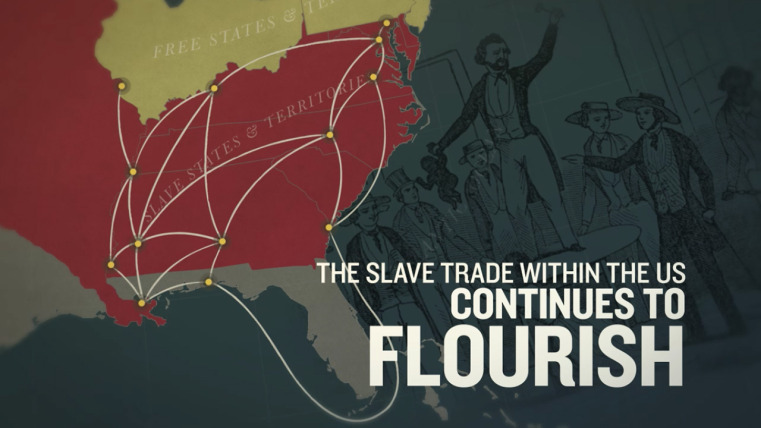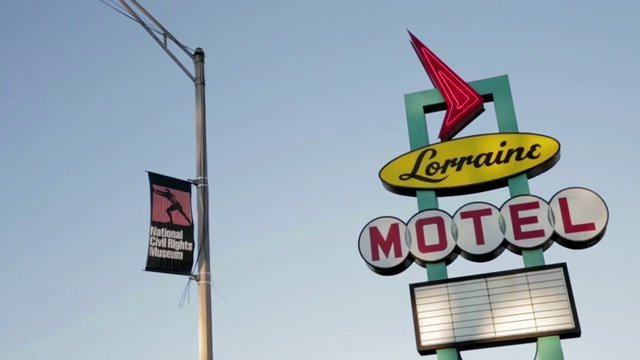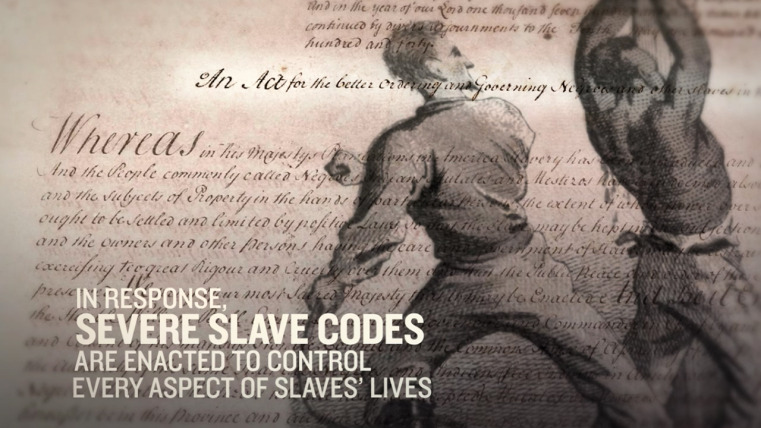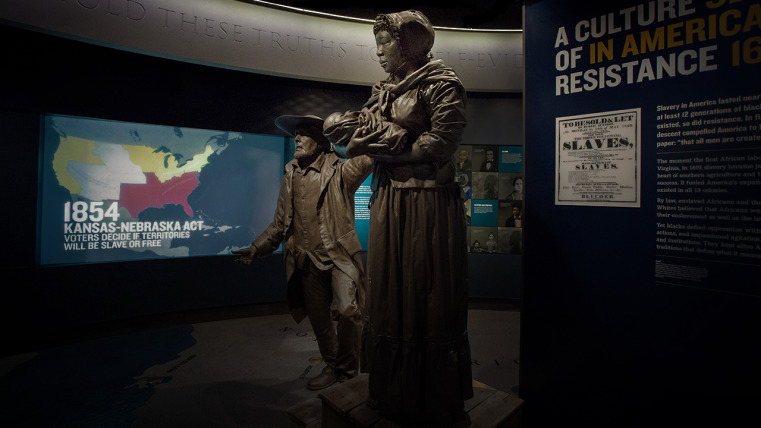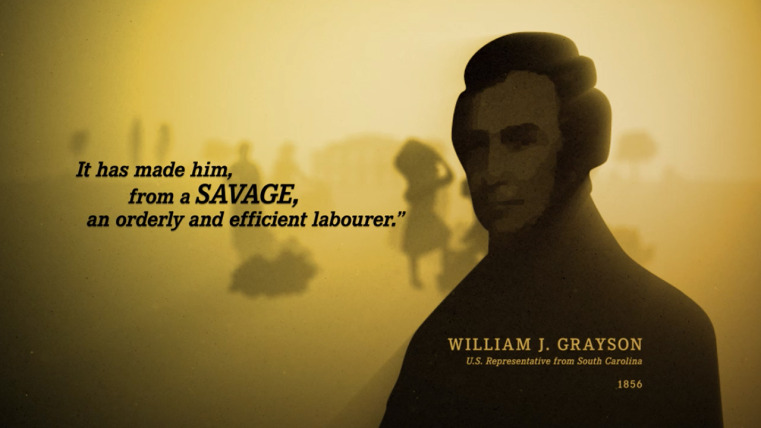Slavery Gallery Films
Animated short films trace the roots of the culture of resistance and illuminate the disparities between the promises of the country’s founding documents and the realities for people of color.
Visitors to the National Civil Rights Museum begin their journey in a circular gallery that depicts the Trans-Atlantic slave trade and the history of slavery in the United States. Here visitors learn that an African American culture of resistance was born not during the Civil Rights Movement of the mid-20th century, but during the earliest days of slavery in Colonial America. Two complementary large-scale films in this gallery engage viewers by revealing the origins of this culture of resistance in a dynamic way.
Mapping Slavery uses maps, infographics, and archival imagery to portray how the economic foundation of the United States, a new nation founded upon principles of equality and freedom, was built upon the labor of millions of enslaved people. Visitors learn how the culture of resistance developed in tandem with the geographic, economic, and political forces shaping the slave trade in the United States.
Founding Principles examines the Declaration of Independence, the Constitution, and the Bill of Rights, illustrating the moral debate over slavery and whether the promises of equality and freedom put forth in these founding documents applied to people of color. The story is told entirely through quotes from primary source material, creating a dialogue, both real and imagined, between the founding documents, abolitionists, and defenders of slavery, and depicting how both sides of the debate evoked these documents in their arguments. Animated silhouettes and kinetic type treatments add context to the historic language, helping to facilitate visitor understanding of this debate.
These early voices of resistance foreshadow the 20th century battle for civil rights, and become a familiar refrain that is echoed throughout the museum as the story of the Civil Rights Movement unfolds.
